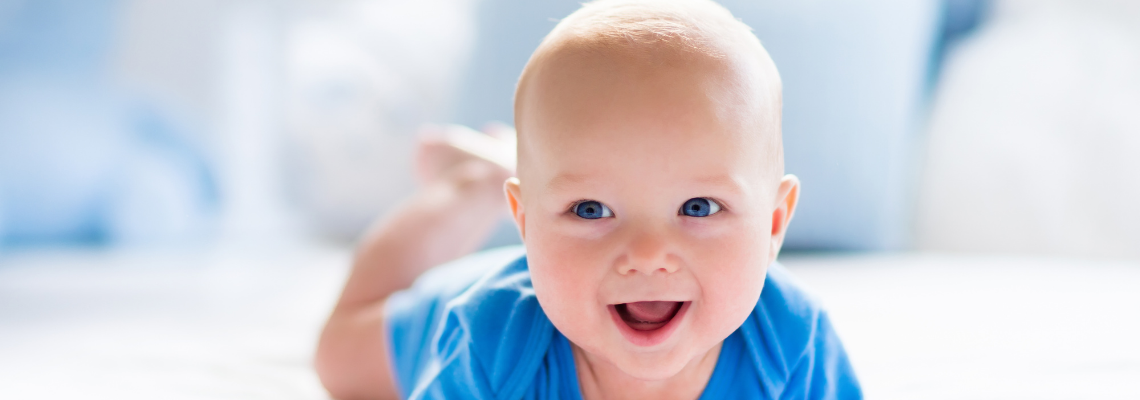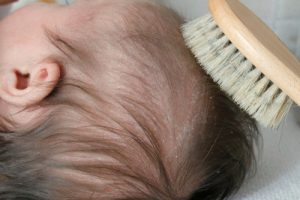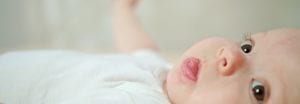
Dry skin is a normal part of life, even for your baby. So if your baby starts developing white or yellow crusty patches on their scalp, it is usually no cause for worry. These crusty patches on their head are typically either cradle cap or dandruff and, in most cases, are treatable at home. Identifying which skin condition it is will help to determine what treatments are best suited for it.
Cradle Cap or Dandruff
Both skin conditions affect babies and can cause unsightly patches of dry skin on the scalp. Neither one is caused by a lack of cleanliness. It is more common for a baby to develop cradle cap over dandruff, as 50% of babies under one year have experienced it.
The appearance of cradle cap can vary from thick white to yellow, crusty or oily scaly patches on a baby’s scalp. The patches are not itchy or painful. Cradle cap is believed to be prompted by a combination of genetics and environmental factors. If this skin condition begins to develop on areas other than the scalp, such as the ears, eyelids, groin and nose, it is recommended to have your baby’s doctor look at it. It is not uncommon for cradle cap to continue off and on until the child is three to four years old.
Dandruff in babies is far less common and regularly has the appearance of dry skin on the scalp. The patches tend to be thin, white flakes that cause a mild to moderate amount of itching. This is thought to be genetic in nature, so if one of the parents is prone to dry skin, there is a chance the baby will have it.
Neither cradle cap nor dandruff are serious skin concerns most of the time. Once it has been determined which skin condition your baby has, it is then time to try the recommended at-home treatments. It is essential to remember that care must be given to the baby’s scalp with any treatment to prevent any irritation.
 Treating Cradle Cap
Treating Cradle Cap
The most common way of treatment is increasing the times in a week that you wash your baby’s hair. Washing it daily with mild baby shampoo can help loosen up some of the thick, scaly patches on the scalp and help clean any loose pieces out of their hair. Some gentle brushing of their hair, both wet and dry, can also help.
Hydrating the scalp with pure plant oils like coconut, olive or jojoba oil can also help to loosen the flakes and nourish the skin underneath. When doing this, massage a small amount of oil into the baby’s scalp for about a minute and let it sit for about 15 minutes. Once the 15 minutes are over, gently wash all the oil off of the scalp. Make sure to get it all washed off, as leaving oil sitting behind can make the cradle cap worse.
Treating Dandruff
Dandruff in babies is mostly caused by dry skin, so the core treatment recommended is to space out the days you wash your baby’s hair. Instead of every day, or every other day, try every two days and see if that helps clear up the dryness.
Plant oils can also be applied for dandruff. Only use olive, coconut or jojoba oil, massage it on their scalp, and let it sit for up to 15 minutes. Then rinse it off with mild baby shampoo. If the skin condition does not improve or worsens, see your baby’s pediatrician and ask about recommendations for medicated shampoos for your baby.
Conclusion
Overall, the treatment for your baby’s scalp condition depends on whether they have cradle cap or dandruff. The difference between them is their appearance on the scalp and if it causes itching. Both conditions are relatively harmless and will clear up on their own eventually. But the above treatment options are available to speed up the process and make the scalp healthier.


